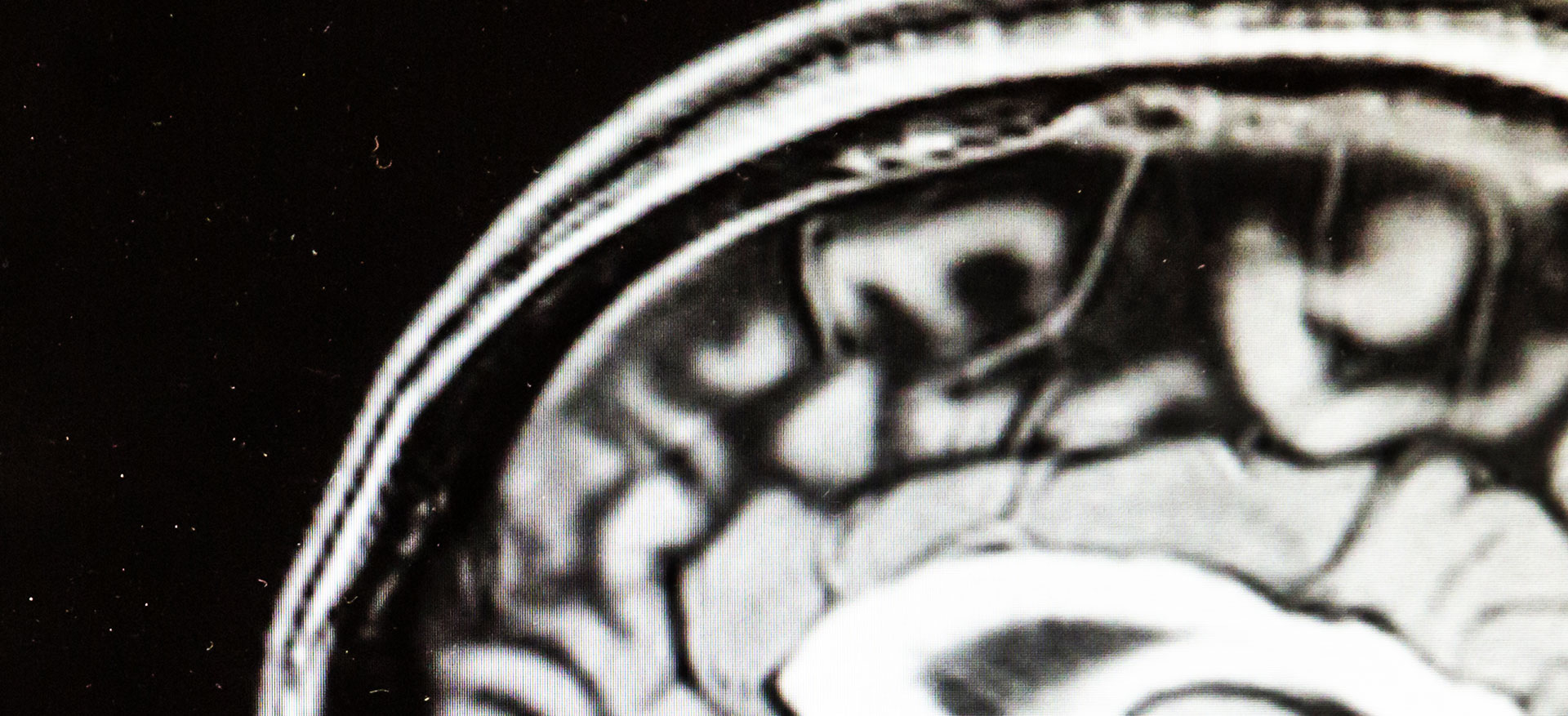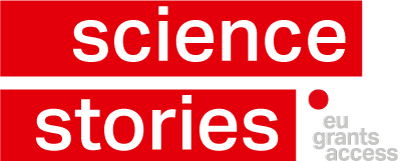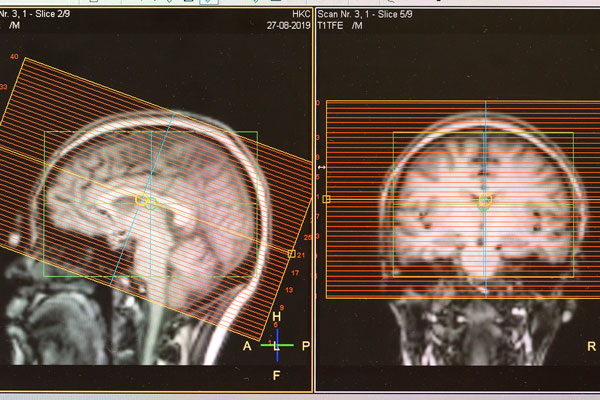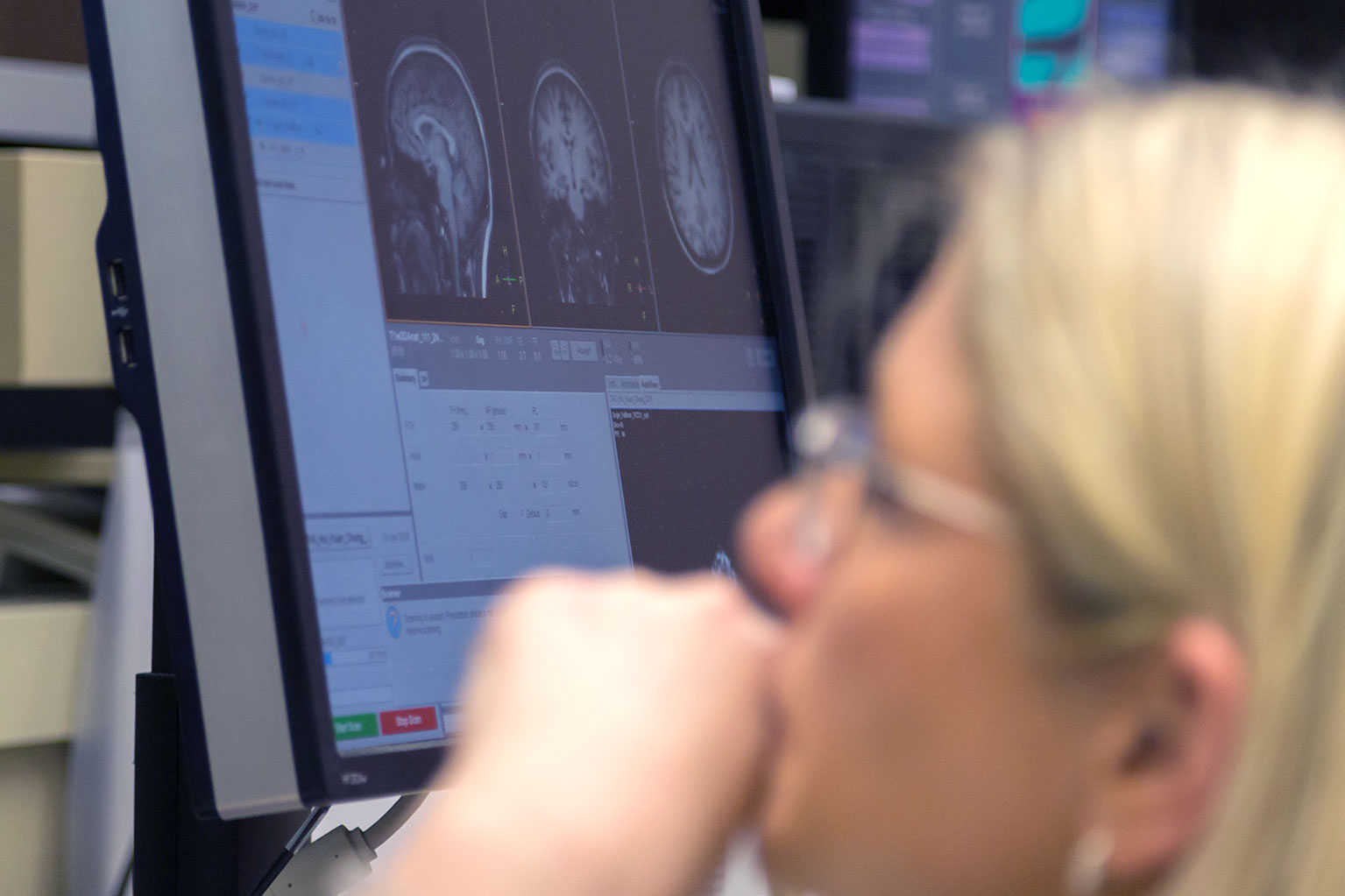
Through the brain with a cup of coffee
How the neuroinformatics scientist Lydia Hellrung looks into the heads of people and thereby explores how neurofeedback can influence our decision-making behaviour. A visit to the neuroeconomics lab at the University of Zurich.
Let’s say, someone offers you 200 Swiss francs today. If you are willing to wait until tomorrow, you will be given 400. Do you wait until tomorrow? Do all people wait? «Not always,» says Lydia Hellrung of the Zurich Center for Neuroeconomics of the University of Zurich. «Sometimes, people behave seemingly irrational because other factors influence their decisions. If today I have nothing to eat, I will take the 200 francs.» We meet the neuroinformatics specialist on a Friday morning in the basement of the University Hospital Zurich in the Laboratory for Social and Neural Systems Research (SNS Lab). Down here, Lydia Hellrung conducts a behavioural experiment with about one hundred participants that shall provide insight into what happens in people’s heads when they make decisions. The experiment is the heart of her research project DOPANF, which is funded by the EU with 175,000 euros. With the help of functional Magnetic Resonance Imaging (fMRI)*, Lydia Hellrung observes the brains of her participants during their decision-making processes. The observation is conducted in real time; throughout the experiment, the MRI constantly provides images of the active brain areas that can be viewed on the screen. At the same time, the hundreds of image scans are filed for later assessment.
Dopamine rewards
The young woman who volunteers this morning as a participant has already followed Lydia Hellrung’s instructions and lies in the scanner bore. Karl Treiber, the SNS Lab Manager, puts the headphones in place and arranges a coil around her head. This magnetic coil will transmit the impulses from the brain to the scanner.
We take a seat in the control room. While Karl Treiber conducts some preparatory tests, Lydia Hellrung tells us what she will see inside the head of her participant. «Being rewarded gives people a pleasant feeling. A reward releases the neurotransmitter dopamine in the brain. During our tests, we therefore focus on the regions of the brain in which dopamine is produced, the midbrain, and we are interested in its connection to the cortex. With our magnetic resonance imaging system, we can focus these areas, analogous to a camera lens, and make their activities visible. They are the centres of the ‘reward system’ in our head. Different degrees of interconnection of these regions correspond to changes in the processing of the dopaminergic signal and therefore may affect the decision behaviour of the participant – in which we are very interested. How valuable is a certain reward to this person? How much effort is this person willing to make in order to receive the reward or to avoid the punishment?» To this end, Lydia Hellrung developed a highly sophisticated experimental system together with her supervisor, the neuroeconomist Philippe Tobler, and a team of psychologists, medical practitioners, biologists and economists of the Zurich Center for Neuroeconomics.
Effort and gain
First of all, the participants are divided into two groups. Both groups have to make an effort; one to gain a reward, the other to avoid a punishment. An overarching storyline sets the frame for the experiment. The participants imagine that they are waiters in a coffeehouse. Those of the reward group can collect a big tip if they provide outstanding customer service. Those of the punishment group can avoid having to pay for the customers’ bill if they offer excellent service. All participants go through a neurofeedback training in which they learn to volitionally regulate the neuronal activity in the dopaminergic midbrain. For that to happen they for example think intensely about situations in their lives in which, thanks to their great effort, they received a reward or prevented a sanction, respectively. The participant in the scanner recently learnt how to ski and thinks about her first successful downhill run. With this technique, the participants activate the areas in the brain that release dopamine. Then, they think of something less rewarding, for example by counting. Thereby, they reduce the neuronal activity in the dopaminergic midbrain. During the test in the MRI, the participants are then asked to alternately up- and downregulate dopaminergic brain activity by means of neurofeedback**. Once they have reached either one of the states, they are asked whether they are willing to solve an effortful mental task for a specific amount of money. The problem represents the service the participants would render for the customer in the coffeehouse. In the task, the more difficult the mental task, the higher the reward. The participants know the problem from a preparatory training and have to decide inside the bore whether the reward offered is worth their effort. What is happening in the dopamine active areas of the brain during this decision-making process, how networks inside the head connect to become the «reward system», can be observed directly on the screen.
Watching the brain during the decision-making process
By now, Karl Treiber has completed the preparatory tests. The screen above the participant’s head works, so does the voice connection via the earphones. The small camera recording the young woman’s eye movements is running as well. It delivers additional data regarding the state of excitation of the participant and is considered in the analysis. «Are you ready?» Lydia Hellrung asks via the earphones. Karl Treiber starts the scanner and on the screens in the control room and above the participant’s head a cup of coffee and an arrow pointing upward appear, appropriate to the story frame. This is the test person’s prompt to upregulate the neuronal activity in the dopaminergic midbrain. The measurement graphs showing the activities of this brain area on the screens rise and reach an upper point after only a few seconds. Now, the arrow on the display points downward und the test person downregulates herself back to the «normal condition», as is visible by the dropping graphs. She repeats this up- and downregulation several times; then, Lydia Hellrung starts the actual test. At the moment in which the graph shows a high activity in the dopamine active areas of the brain, the following question appears on the display: Are you ready to solve the problem with first difficulty level for two Swiss francs? The test person clicks «no» on her controller and the cup of coffee and the arrow pointing downward reappear on the screen. The young woman downregulates herself into her «normal condition» and the whole process begins anew. The question is now repeated several times with different levels of difficulty and reward sizes, at high or low activity in the dopaminergic midbrain of the participant. With this test, Lydia Hellrung tries to find out whether people are more willing to make a greater effort for the same reward during the state of high activity or whether the participants must be offered a higher reward during the «normal condition» in order to be willing to make a greater effort. In order to actually receive the reward, the participants must implement their decision in the scanner and solve the problem at the level of difficulty they chose for the reward they decided on. The young woman participating in the experiment this morning decides to tackle the problem at the third level of difficulty for 3.90 Swiss francs.
A call from Zurich
Later that morning, over a real coffee in the kitchen of the lab, Lydia Hellrung tells us about how she came across this project. Already during her studies of computer sciences and biomedical engineering, she had dealt intensely with learning algorithms for artificial intelligence and medical imaging techniques. After her doctorate at the Max Planck Institute for Human Cognitive and Brain Sciences in Leipzig, where she developed software for magnetic resonance imaging data analysis and neurofeedback in a team of psychologists, medical practitioners and biologists, she continued working as a postdoc at the Technische Universität Dresden on the development and application of these techniques. There, she received a call in the summer of 2016 from a colleague, asking her whether she wanted to come to Zurich. Philippe Tobler, who has an excellent reputation as expert in the field of reward processing, would like to have her join the team as a postdoc and contribute with her great technical expertise in fMRI. She hardly hesitated and accepted. In Zurich, she was given an outstanding infrastructure and an interdisciplinary team and the opportunity to do what she had long wished for: Conducting a study on the «reward system» combining brain imaging and behavior with the method of real-time fMRI. She started her work as a postdoc and developed the research project DOPANF together with Philippe Tobler. But there was also the financial issue. EU GrantsAccess recommended that Lydia Hellrung apply for a Marie Skłodowska-Curie Individual Fellowship of the European Research Council and helped putting together her application. She was awarded the Fellowship and was able to start her DOPANF Project on 1 June 2018. The Marie Skłodowska-Curie Individual Fellowship is the stepping stone for the young neuroinformatics scientist to a research career. With DOPANF she can make her mark in the research community. «It is like growing up. For the first time, I am the boss for a project and have to deliver,» she laughs.
Hope for addicted persons
DOPANF expires at the end of May 2020. As time is also up for our coffee talk in the lab kitchen, we inquire about the specific merits of the project and about what we will know once it is completed. «At the level of basic research, we will have gained first insights about the distinctions of the various networks in our brain, depending on whether someone makes an effort to obtain a reward or to prevent a punishment and about which one of the groups learnt more effectively. However, these results will also be of practical use for the understanding and therapy of psychiatric disorders,» Lydia Hellrung explains. «We know that addictions go hand in hand with dysfunctions of the dopamine system. Once we understand how the ‘reward system’ in the brain functions, the activity of the dopaminergic areas of the brain can be regulated by means of neurofeedback training. In addition to this, we hope to resolve an old question with the findings from this project: Do addicted persons have a problem because their dopamine system is impaired and this is why they take to drugs or the bottle – or do they first develop an addictive behaviour which then changes the dopaminergic system in the brain? The answer is crucial for the treatment.» In one of her forthcoming studies, Lydia Hellrung would like to train the connectivity, the interaction of the «reward and emotion system» in the brain with the real-time fMRI technique. «Such study would open entirely new possibilities for the investigation of the brain functions’ influence on the behaviour,» she states. «With your own research group?» we ask. «Would be my dream,» she says.
* fMRI is an imaging technique with the methods of magnetic resonance imaging. It can depict neural activity specific to a task with very high spatial resolution in the form of sectional image series.
** Neurofeedback means that brain activities are analysed in real time by a computer and depicted on a screen. The participants receive the status of their own brain activity as feedback and can learn to volitionally self-regulate brain activities. This allows to train participants on specific changes in brain target regions related to a specific brain function and to observe resulting changes in their behaviour.
The Zurich Center for Neuroeconomics (ZNE)
is an interdisciplinary research centre of the Department of Economics at the University of Zurich (https://www.zne.uzh.ch/en.html). The Laboratory for Social and Neural Systems Research (SNS Lab) is the heart of the ZNE. In this interdisciplinary laboratory researchers explore the biological and neural mechanisms that underlie human decision making. They combine cutting-edge brain imaging technologies with non-invasive brain stimulation and computational modeling. The laboratory is located in a custom-built section of the Magnetic Resonance Tomography Centre at the University Hospital Zurich and is equipped with research-dedicated facilities for the functional magnetic resonance imaging system (fMRI). The SNS Lab operates in close collaboration with other research centres of the University of Zurich and of ETH Zurich such as the Translational Neuromodeling Unit (https://www.tnu.ethz.ch/en/home.html) and the Divisions of Bioimaging and MRI Technology of the Institute for Biomedical Engineering (https://www.mr.ethz.ch/index.html.en).
Interview with Lydia Hellrung (German)
Lydia Hellrung
Lydia Hellrung finished her studies at the Technische Universität Ilmenau, Germany, in Computer Science in 2006, majoring in Neuroinformatics. She then worked as a Software Engineer for Carl Zeiss Meditec AG in Jena, where she developed programmes for imaging methods. She left the industry in 2009 for a position as PhD candidate in Computer Science at the Max Planck Institute for Human Cognitive and Brain Sciences in Leipzig, where she developed software packages for functional magnetic resonance imaging in real-time (real-time fMRI) and its application in behavioural experiments regarding the emotional system and eating behaviours. After her PhD, she worked as a Postdoc at the Department of Psychiatry at the Neuroimaging Centre of the Technische Universität Dresden. From 2014 to 2016, she there conducted experiments with the fMRI method on the decision-making behaviour and the regulation of emotions through neurofeedback. Since November 2016, she is a Postdoc at the Zurich Center for Neuroeconomics of the University of Zurich and since 2018 she is the leader of the DOPANF research project.
MSCA Fellowship
DOPANF: Dopaminergic midbrain modulations by (adaptive) neurofeedback
- Prorgamme: Marie Skłodowska-Curie actions, European Fellowship
- Duration: 24 Months
- Contribution for University of Zurich: 175’419 €





